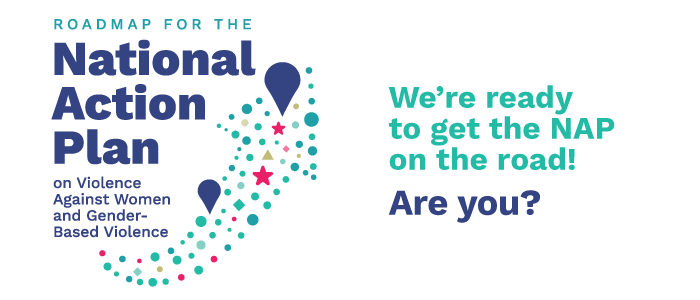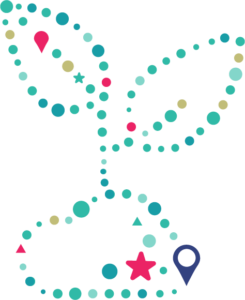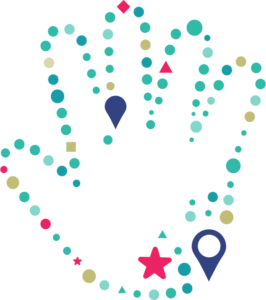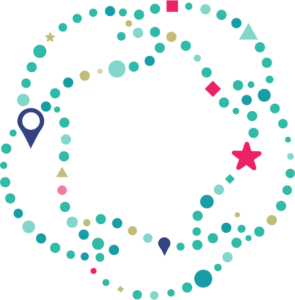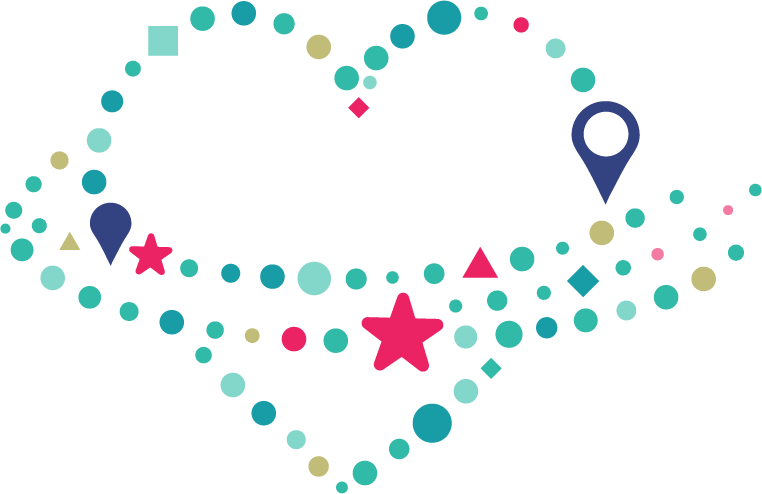On April 30, 2021, we delivered A Report to Guide the Implementation of a National Action Plan on Violence Against Women and Gender-Based Violence to the federal government.
With this report, governments at all levels now have the definitive answer to the question:
What will it take to achieve a Canada free of gender-based violence?
This report is the culmination of 10 years of advocacy for a National Action Plan (NAP). (How we got here.)
Key Takeaways
For the NAP to be successful, it requires:
- independent oversight and evaluation
- billions in investment, not millions
- an all-of-government approach
- cooperation and coordination between federal and provincial/territorial governments
- voices and experiences of people most affected at the centre
- people living in rural and remote areas, Indigenous people, Black people, people with disabilities, racialized people, non-binary and trans people, LGBTQI2S+ people, and migrant people
- systemic solutions for systemic problems
- minimum 10 years horizon
What’s in the report?
100 recommendations across four pillars provide a ready roadmap for the National Action Plan on VAW and GBV (NAP) and the NAP Secretariat announced in the federal budget in April.
The work in this report should be seen as the beginning of a longer process. Systemic problems require systemic solutions informed by more thought and deliberation than our time allowed.
The report was completed after Budget 2021 wherein investments to develop a NAP and NAP Secretariat mark a truly historic milestone. $14 million to initiate a NAP is enough to do what needs doing, it now needs strategic structures and timelines.
To give the NAP the best chance of strategic, long-term success, it needs an initial term of minimum 10 years and billions, not millions, in strategic investment.
We* look forward to working closely with the federal government to ensure the NAP gets on the road in 2021 with community-based anti-violence expertise.
Pillars and Harmonization
The report is organized around four areas of social policy that offer a strategic outline for a NAP. These “pillars” emerged from dialogue with government regarding community’s calls for action in these policy areas:
A fifth pillar on Indigenous Women’s Leadership was assigned to a process outside this project and rests with the WAGE Indigenous Women’s Circle. Another separate, related process is the development of a national action plan in response to the findings of the National Inquiry into Missing and Murdered Indigenous Women and Girls (MMIWG). While we had hoped to complement and amplify the findings and recommendations of those two initiatives, time did not allow for meaningful collaboration.
We expect the team developing the NAP Secretariat and initiating the NAP to ensure respectful harmonization with the plans emerging from the fifth pillar on Indigenous Women’s Leadership and the national action plan on MMIWG.
What if a policy theme doesn’t fit into just one of the four pillars?
Recommendations
The recommended 100 policy actions presented in tables from pages 19-106 within the four pillars have been developed and scrutinized by four working groups. The resulting rationales, recommendations, and considerations for Monitoring, Evaluation, Accountability, and Learning (MEAL) cover policy directions and actions to be taken in the immediate, short, medium and long-term by federal, provincial/territorial, and municipal governments. This emphasizes the all-of-government approach required for the NAP to be successful.
These recommendations for policy action represent the most strategic priorities determined by the expert Working Groups and offer a manageable list of actions to enter public discourse before the NAP embarks on its (minimum) 10-year horizon.
We summarize on page 107 the numerous themes identified that cut across all pillars, taking different angles depending on the types of outcomes, activities, or processes that particular policy requires. We name the level of government responsible for enacting the change required—making special note of their public commitments to the principles a specific recommendation fulfills—and we group measurable outcomes according to broad results. We additionally capture context, considerations, and nuances not yet resolved or not necessarily evident in the sheer statement of the recommendation itself.
We encourage the team developing the NAP Secretariat and initiating the NAP to consider these recommendations a ready roadmap for the work ahead.
MEAL & Independent Oversight
As noted in our findings, especially from our research on the multiple and consecutive three-year NAPs that have been implemented in Australia, a robust Monitoring, Evaluation, Accountability, and Learning (MEAL) framework must be in place from the beginning to ensure that evidence is properly generated to support the NAP’s ongoing success. This, along with the early establishment of a body/mechanism empowered to provide independent oversight of the NAP is critical to ensuring transparency and accountability.
Independent oversight gives the NAP its best chance at strategic, long-term success. And it has to be established from the start, with community-based anti-violence expertise at the table. An Independent Oversight Body of Experts is critical to objectively tracking and evaluating progress on the NAP. Plus, it will provide the structural support needed for the NAP to survive election cycles and different government mandates.
We expect an intersectional feminist MEAL framework to be embedded into the NAP Secretariat and NAP before implementation begins.
Values and Framework
Working Groups noted that feminist intersectionality must not be merely scattered throughout public policy speak without careful attention to its implications. Without exception, all WGs identified that the recommendations we were furnished require a significant re-analysis and updating in light of the known reality of the intersectional impacts of VAW/GBV. While we have undertaken the work of collating the intersections of harm to be addressed by the recommendations and imagining new paths for each pillar, work remains for those who follow this roadmap to continue this crucial practical engagement.
The report uses several recommended policy actions to remind government to fulfill its existing international human rights obligations, to advance Canada’s participation in the global human rights contract, and to maintain its credibility as a human rights leader on the world stage.
We expect the NAP to take a feminist, intersectional, human right-based approach.
Nothing About Us Without Us
Working Groups emphasized that the populations most affected by violence are those that are consequently most affected by our failure to reduce rates of violence through our interventions to date: people living in rural and remote areas, Indigenous people, Black people, people with disabilities, racialized people, non-binary and trans people, LGBTQI2S+ people, and migrant people. Without adequate consideration of the ways in which violence is experienced differently, recommended actions may simply redistribute harms across social systems and populations.
To make the NAP meaningful, the expertise & experiences of those most affected by GBV must be centred at all tables at all stages.
Take Action!
We’re ready to help get the NAP on the road! Are you?
Help make sure its first stops are …

Ensuring Proper Governance & Accountability
Let’s remind government the of importance of establishing an Independent Oversight Body of Experts for the NAP as early as possible!

Harmonizing Responses to MMIWG
Let’s remind government the importance of harmonizing the NAP from the start with the separate, ongoing efforts to end violence against Indigenous women, girls, 2SLGBTQQIA+ people!

Ensuring a stable VAW/GBV sector
Let’s remind government that the NAP must be guided by expertise from a stable, resourced VAW/GBV sector from the start!
How Did We Do It?
This report is the result of intense strategic engagement and analysis that took place over three months in early 2021 with anti-violence experts from across Canada representing 1000 person-years of experience and knowledge in the areas of violence against women (VAW) and gender-based violence (GBV).
The Department of Women and Gender Equality (WAGE) provided us with over 646 policy recommendations related to VAW/GBV gathered over the years from a variety of sources (government papers, NGO reports, policy papers, etc.). We divided those by pillar. Four working groups (WGs), with two co-chairs and eight members each (page 159), reviewed, sorted, analyzed, and did significant homework on the implications of those recommendations. With support from the project support team (page 159), WGs then met the challenge of identifying and drafting 20 recommendations each for this report. Some submitted more than 20 to reflect the priorities determined by strenuous analysis and deliberation.
WG meeting notes were coded and analyzed, allowing the writing team to observe and capture the key themes and findings across hundreds of hours of discussion by GBV experts from across the country.
*Who Are We?
We are a strong, pan-Canadian voice on VAW and GBV.
We are anti-violence leaders across Canada: experts, advocates, and survivors from national organizations, frontline service and support organizations, grassroots community groups, the labour movement, the law, academia, and the public.
Led by Women’s Shelters Canada (WSC), we have consulted and collaborated with stakeholders from coast to coast to coast to advocate for and develop a National Action Plan on VAW/GBV. At the end of 2020, WSC was asked and funded by WAGE to work with us to develop a strategic framework for a NAP. Our full report was delivered on April 30, 2021.
We define violence against women and gender-based violence as inclusive of cis women, trans women, and people of all marginalized genders, including Two-Spirit, trans, and non-binary people.

